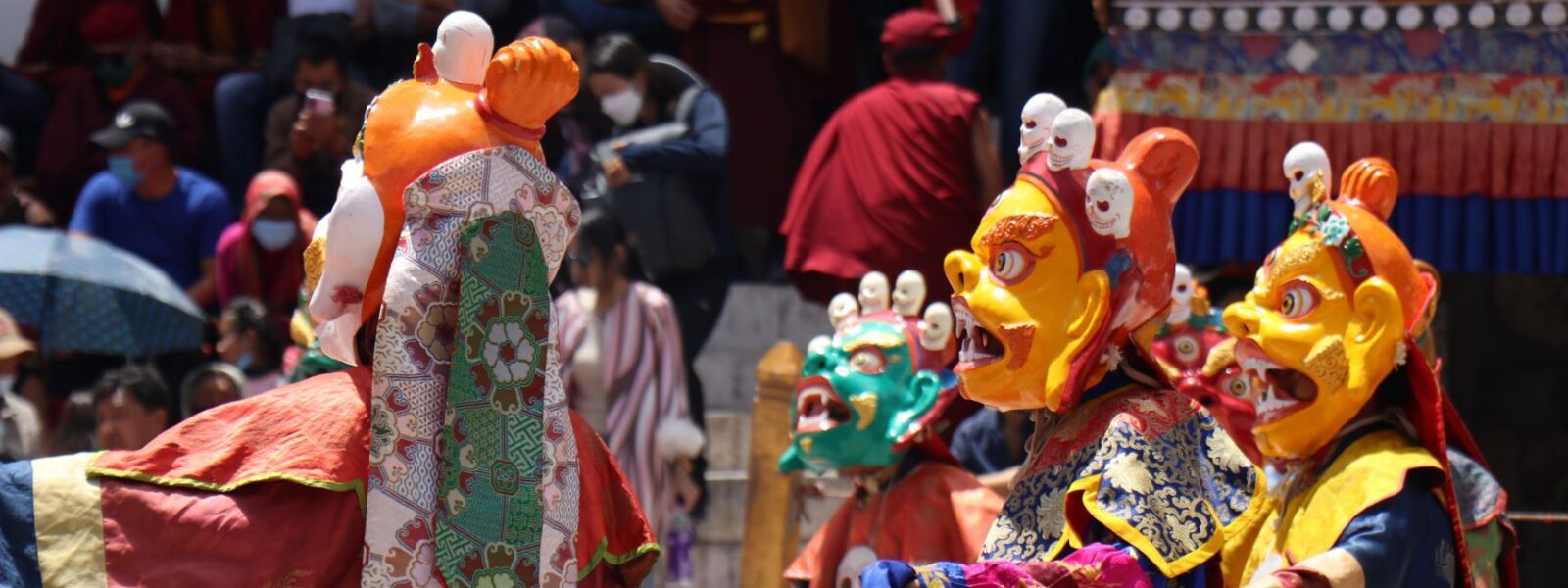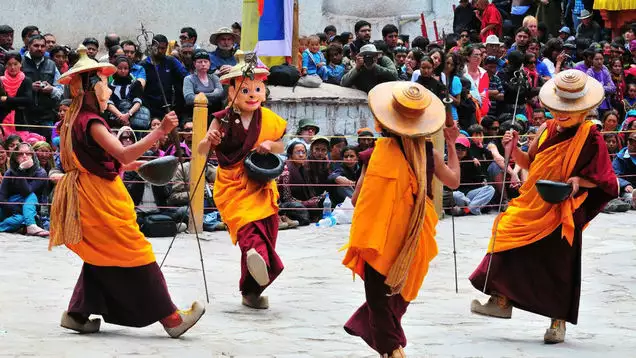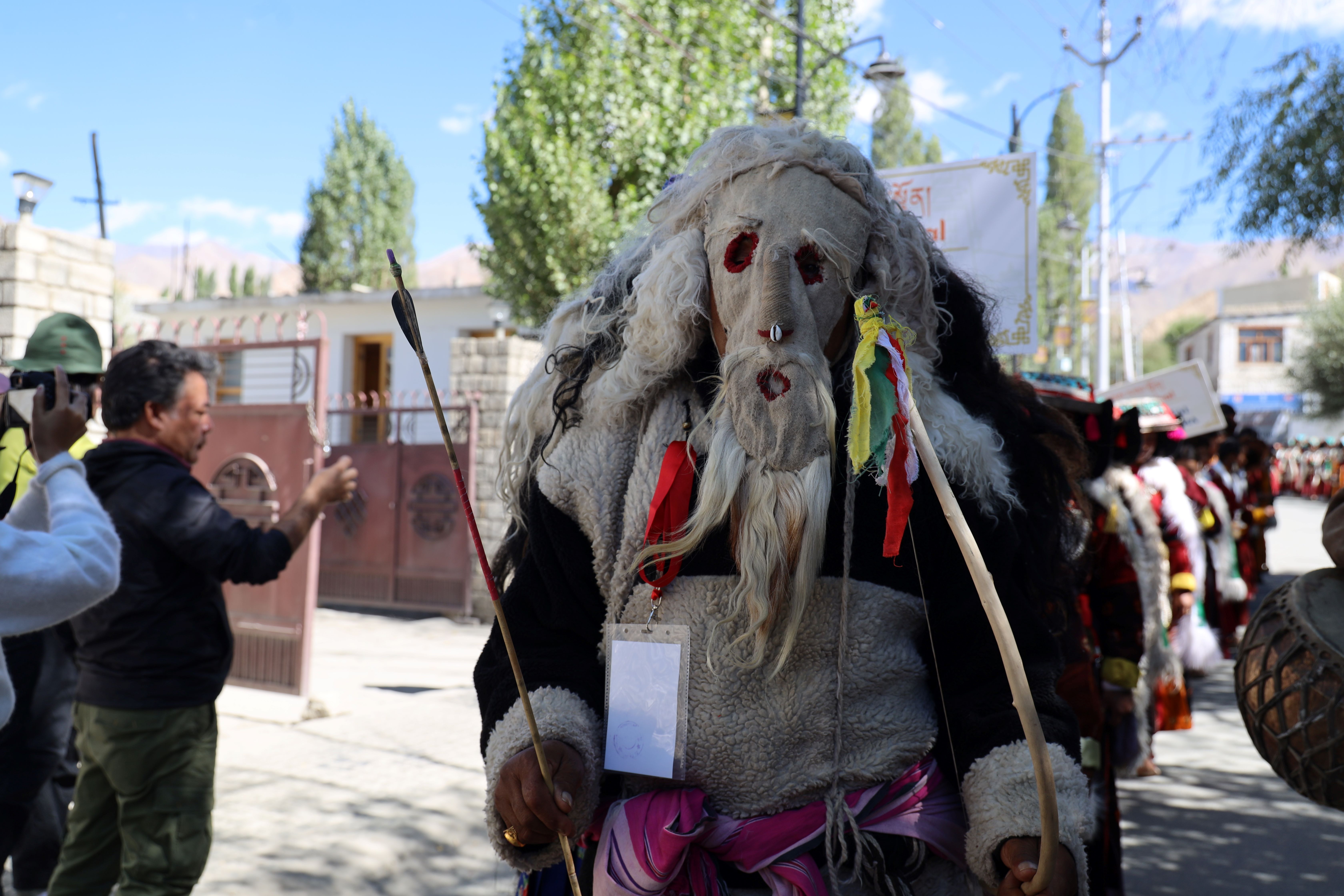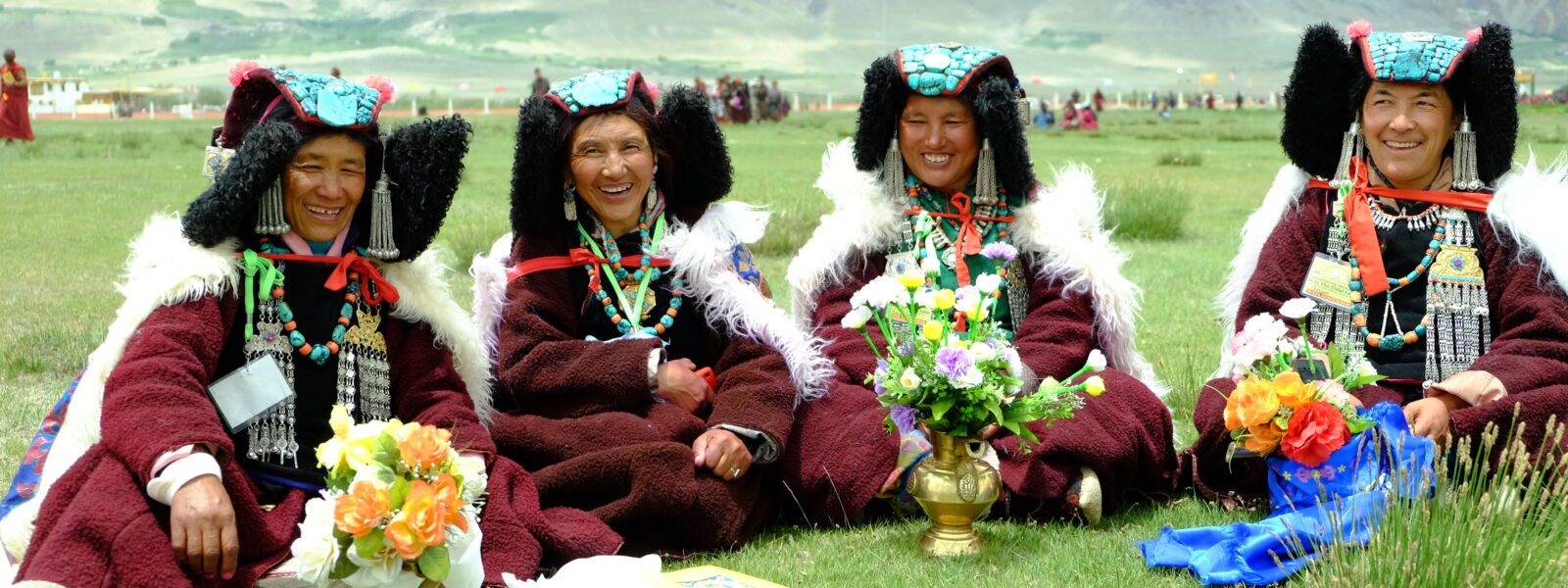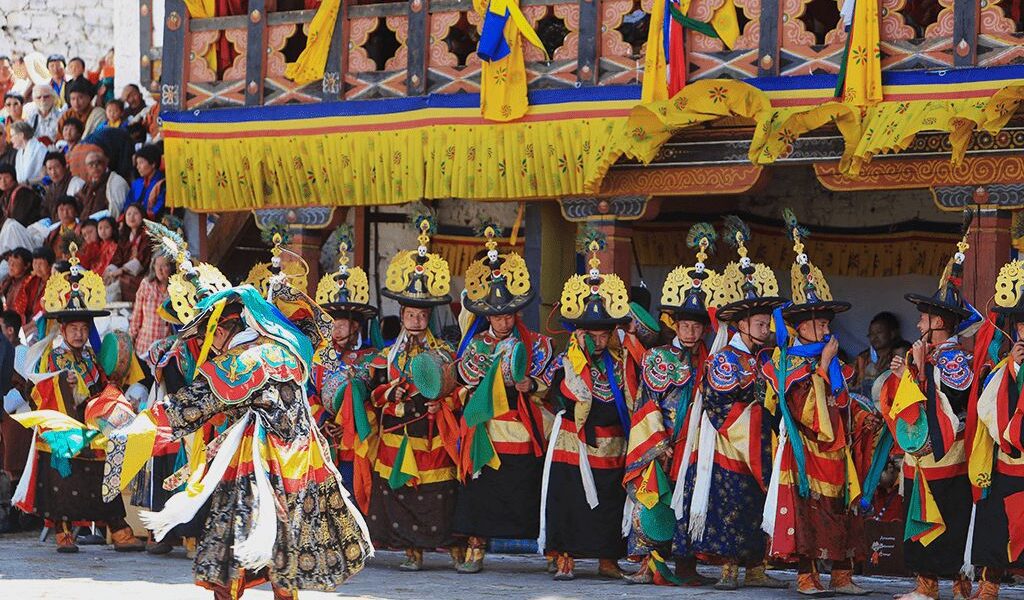Ladakh’s unique blend of breathtaking Himalayan scenery and rich cultural heritage makes it an incredible destination for those interested in trekking and traditional festivals. The Ladakhi Lunar Calendar Trek offers a one-of-a-kind experience that combines exploring Ladakh’s rugged trails with the immersive experience of participating in time-honored Buddhist festivals. Each year, these festivals bring Ladakh’s vibrant traditions, spirituality, and community spirit to life, offering visitors a journey unlike any other.
Understanding Ladakh’s Lunar Calendar and Festivals
The Ladakhi Lunar Calendar and Its Cultural Significance
The Ladakhi lunar calendar follows Buddhist traditions, with each phase of the moon marking significant dates for festivals and rituals. Unlike the Gregorian calendar, Ladakhi festivals do not fall on fixed dates each year; instead, they shift according to the lunar cycle. This calendar is woven into the cultural and spiritual fabric of Ladakh, guiding the timing of celebrations and ceremonies across the region.
For trekkers, aligning a journey with these festivals offers an incredible way to connect with the culture. Festivals are held in various monasteries and villages, often in remote parts of Ladakh, making the trek both a cultural and spiritual adventure.

Why Trek During Ladakhi Festivals?
Trekking during Ladakhi festival seasons is a unique experience for many reasons:
- Cultural Immersion: By trekking during festival time, travelers experience Ladakh’s culture beyond the landscape.
- Spiritual Encounters: Witnessing monks perform rituals, chant prayers, and practice centuries-old dances offers insight into the spiritual lives of Ladakhis.
- Scenic Backdrops: Festivals often take place in monasteries nestled in dramatic mountain landscapes, adding beauty to the spiritual experience.
“Attending the Hemis Festival while trekking was transformative! The energy, colors, and devotion were breathtaking. It’s a memory I’ll cherish forever.” – Emma Smith, Travel Blogger, USA
Major Festivals on the Ladakhi Lunar Calendar
Below is a table outlining Ladakh’s major festivals for the years 2024 and 2025, with locations and dates to help trekkers plan accordingly.
| Festival Name |
Location |
Dates 2024 |
Dates 2025 |
| Spituk Gustor |
Spituk Monastery |
09-10 Jan |
27-28 Jan |
| Dosmochey |
Leh, Likir, Diskit |
07-08 Feb |
26-27 Feb |
| Stok Guru Tsechu |
Stok Palace |
19-20 Feb |
09-10 Feb |
| Matho Nagrang |
Matho Monastery |
23-24 Feb |
13-14 Feb |
| Saka Dawa |
All over Ladakh |
23 May |
11 Jun |
| Yuru Kabgyat |
Lamayuru Monastery |
03-04 Jun |
22-23 Jun |
| Hemis Tsechu |
Hemis Monastery |
16-17 Jun |
05-06 Jul |
Hemis Festival – A Celebration of Buddhism
The Hemis Festival is held at Hemis Monastery, one of the largest monasteries in Ladakh. Taking place in June or July, this festival celebrates the birth anniversary of Guru Padmasambhava, the founder of Tibetan Buddhism.

Highlights:
- Masked dances representing the victory of good over evil.
- Lavish, colorful costumes worn by monks during performances.
- Pilgrims and tourists join together in the celebration.
“The energy at Hemis Festival was incredible. Seeing the monks perform ancient dances in those vibrant costumes felt like stepping into a different world.” – Carlos Moreno, Photographer, Spain
Dosmoche Festival – The Festival of the Scapegoat
Celebrated in February, Dosmoche takes place in Leh, Likir, and Diskit monasteries. Known as the “Festival of the Scapegoat,” it involves ritual dances and ceremonies to ward off evil and bring good fortune.
Highlights:
- Rituals to drive away negative energies and promote community well-being.
- Dances with symbolic masks and costumes.
- A festive atmosphere in Leh’s main market.
Losar – Ladakhi New Year
The Losar Festival marks the beginning of the Ladakhi New Year. Observed with traditional rituals, family gatherings, and colorful decorations, Losar is a time of renewal.

Highlights:
- Ladakhis decorate homes with prayer flags and offerings.
- Monks perform rituals to protect against misfortune in the coming year.
- Families gather to feast and pray together.
“The warmth of Ladakhis during Losar touched my heart. Despite the winter chill, I felt a part of the community.” – Lucas Johnson, Anthropologist, Canada
Matho Nagrang – The Oracle Festival
Matho Nagrang, held in February at Matho Monastery, is known for its oracle performances. Monks prepare for weeks through meditation and fasting to become oracles, believed to channel spiritual guidance.
Highlights:
- Unique oracle rituals by monks.
- Insight into Ladakh’s spiritual beliefs.
- A chance to witness spiritual practices usually closed to outsiders.
Planning Your Ladakhi Lunar Calendar Trek
Best Time for the Festival Trek
The ideal trekking seasons align with festival dates in both winter and summer:

- Winter Treks: January and February are perfect for winter festivals like Spituk Gustor and Dosmoche.
- Summer Treks: June and July host major festivals like Hemis Tsechu and Yuru Kabgyat, suitable for warmer, high-altitude treks.
Festival Trekking Tips:
- Plan Ahead: Trekking during festival time can mean higher demand for accommodations.
- Acclimatize Properly: Altitudes can vary greatly; acclimatization is essential, especially for winter treks.
“The warmth of locals, despite the cold temperatures, was heartwarming. Being prepared for the altitude and weather made all the difference.” – Lily Davidson, Teacher, UK
Essential Gear for Festival Treks
- Warm Layers: Winter festivals in Ladakh can be frigid; pack quality thermal layers.
- Traditional Offerings: Visitors are encouraged to offer small donations at monasteries.
- Eco-Friendly Essentials: Bring reusable water bottles and biodegradable toiletries to minimize environmental impact.
Top Trekking Routes During Ladakhi Festivals
Hemis Monastery Trek
The Hemis Monastery trek provides a scenic route through lush valleys and rugged mountains. This trek aligns perfectly with the Hemis Festival, giving trekkers a chance to experience both nature and culture.

- Highlights: Stunning mountain views, cultural immersion, and visits to remote monasteries.
- Difficulty: Moderate; suitable for trekkers with a basic fitness level.
Leh and Nearby Monasteries for Dosmoche Festival
During the Dosmoche Festival, Leh’s main monasteries, including Likir and Diskit, are alive with celebrations. Trekking around Leh offers easy access to festival sites while taking in views of the Indus Valley.
- Highlights: Cultural activities in Leh, visits to nearby monasteries.
- Difficulty: Easy to moderate; suitable for most skill levels.
Experiencing Ladakhi Culture First-Hand
Ladakhi Cuisine and Festival Delicacies
Ladakhi festivals are filled with unique local foods:
- Butter Tea: A salty, buttery tea served warm, perfect for the cold weather.
- Momos: Traditional dumplings filled with meat or vegetables.
- Skyu: A hearty noodle soup, typically prepared for festive occasions.
“Trying traditional Ladakhi food, especially butter tea, was an experience I didn’t expect to love. It was such a comfort in the cold.” – Marie Dubois, Culinary Writer, France
Traditional Dance and Costumes
Ladakhi festivals showcase colorful costumes and traditional dances:
- Chhams: Masked dances performed by monks, symbolizing stories from Buddhism.
- Traditional Attire: Monks and participants wear vibrant robes and symbolic masks.
Sustainable and Respectful Trekking in Ladakh
Eco-Friendly Travel Tips for Ladakhi Treks

Ladakh’s fragile environment requires visitors to tread carefully. Follow eco-friendly practices:
- Leave No Trace: Dispose of waste responsibly.
- Support Local Businesses: Buy from local artisans and donate to monasteries.
- Minimize Plastic Use: Use reusable items whenever possible.
“As an ecotourist, I appreciated the locals’ efforts in preserving their land. Following simple practices made my trek more rewarding.” – Sarah Wilson, Environmental Scientist, Australia
Conclusion: The Journey of a Lifetime on the Ladakhi Lunar Calendar Trek
The Ladakhi Lunar Calendar Trek is more than just a trek through stunning landscapes. It’s a journey into a living cultural heritage that offers travelers a glimpse of Ladakh’s spiritual side. From vibrant festivals like Hemis Tsechu to the sacred rituals of Dosmoche, this trek brings travelers closer to the heart of Ladakhi culture.

FAQs
What is the best time to experience the Ladakhi Lunar Calendar Trek?
Winter (January-February) and summer (June-July) are ideal, aligning with major festivals.
Do I need any special permits for trekking in Ladakh?
Yes, permits are often required, especially for certain protected areas.
How can I show respect during Ladakhi festivals?
Dress modestly, avoid disrupting ceremonies, and follow photography guidelines.
What are some eco-friendly practices for Ladakh?
Use reusable water bottles, dispose of waste responsibly, and avoid plastic.
Is it safe to trek in Ladakh during winter?
Yes, but proper gear and acclimatization are essential due to cold and altitude.
Ladakh festival schedule 2024
The Ladakhi Lunar Calendar Trek
The Ladakhi Lunar Calendar Trek | The journey through Ladakh mirrors the very essence of unraveling unknown horizons, as its dramatic landscapes and unique cultural identity awaken the deepest sense of wonder and exploration. The Ladakhi Lunar Calendar Trek delves into this realm where inner peace intertwines with the wild, untouched beauty of Ladakh. From the snow-capped peaks to the serene monasteries, every step in Ladakh is a step toward self-discovery. The mountains, ancient paths, and unspoken mysteries stretch before travelers, offering a meditative experience where each encounter feels both effortless and transformative. Whether it’s trekking across remote valleys or sitting quietly beside a sacred lake, Ladakh invites those who seek a deeper connection to the natural and spiritual world.

The Ladakhi Lunar Calendar Trek
The monasteries of Ladakh stand as living monuments to the region’s profound spiritual heritage. With origins dating back over a thousand years, these ancient structures are both places of worship and repositories of art, culture, and wisdom. Hemis Monastery, one of the largest in Ladakh, is renowned for its annual festival, featuring colorful mask dances performed by monks. The history of these monasteries reflects Ladakh’s role as a crossroads between India, Tibet, and Central Asia, where religious and cultural influences have intertwined over the centuries.
The Tibetan Buddhist influence is especially evident in the architecture and daily life of the monks. Prayer wheels, intricate murals, and the soft hum of chants fill the air as visitors explore the monastery grounds. Each monastery, from the remote Lamayuru to the awe-inspiring Thiksey, offers a window into the spiritual heart of Ladakh. These centers of meditation, learning, and community life continue to thrive, preserving traditions that have shaped Ladakh for generations.
Why Visit Ladakh for The Ladakhi Lunar Calendar Trek?
Ladakh is a destination that transcends mere travel. It offers a journey that touches both the outer and inner landscapes, making it a perfect setting for those who seek to unravel their own unknown horizons. The region’s breathtaking scenery—from towering mountain ranges to hidden valleys—provides not just an escape but a space for contemplation and growth. Ladakh’s culture, deeply rooted in Buddhist practices, invites visitors to reflect on their own lives and the world around them.
Ladakh’s people, known for their warmth and hospitality, add to the richness of the experience. Villages like Sumda Chun and the legendary Nubra Valley introduce travelers to a way of life that is intricately connected to nature and spirituality. Staying in local homestays allows for immersive experiences where one can learn about traditional Ladakhi customs, share meals made from local produce, and participate in community rituals.

Beyond its natural beauty, Ladakh offers a unique opportunity to explore oneself. The vastness of the region’s plateaus and the clarity of its skies seem to mirror the vastness of the human spirit. Whether it’s standing atop a mountain pass at 18,000 feet or meditating in a centuries-old monastery, Ladakh helps unravel the unknown horizons within each traveler.
Finding the Best The Ladakhi Lunar Calendar Trek in Ladakh
Finding the best places in Ladakh to experience “The Ladakhi Lunar Calendar Trek” involves venturing off the beaten path. Ladakh’s lesser-known treks, such as those leading to secluded monasteries or high-altitude lakes, offer unparalleled opportunities for solitude and reflection. The Markha Valley trek, for instance, takes travelers through verdant valleys, ancient villages, and high-altitude passes, allowing for both physical and spiritual exploration.
Ladakh’s iconic lakes, including Pangong Tso and Tso Moriri, are ideal spots for quiet contemplation. Their still waters reflect the sky, creating a mesmerizing landscape that feels timeless and infinite. Sitting beside these lakes, especially at dawn or dusk, brings an overwhelming sense of peace and connection with nature.

For those interested in Ladakh’s spiritual heritage, exploring monasteries such as Alchi, Phyang, or Diskit can be a transformative experience. These sites are not just places of worship but also centers of art, philosophy, and wisdom. Visiting these monasteries, with their ancient murals and intricate statues, offers insight into Ladakh’s rich cultural tapestry.
Ladakh’s Atmosphere and The Ladakhi Lunar Calendar Trek
Ladakh’s atmosphere is unlike any other place on Earth. The stark contrasts between the rugged mountains and the serene, tranquil monasteries create an environment that feels both raw and sacred. The traditional decor in Ladakhi homes and religious sites reflects this balance, with mud-brick houses adorned with prayer flags and colorful thangkas (Buddhist paintings) that add warmth and spiritual meaning to the space.

The interiors of Ladakhi homes, often simple and functional, are filled with symbols of devotion. Small shrines dedicated to Buddhist deities are common, and the air is often fragrant with incense. The use of earthy materials, like stone and wood, along with brightly colored textiles, creates an inviting and peaceful space, perfect for relaxation and reflection.
Traditional Ladakhi Cuisine
Traditional Ladakhi cuisine is an integral part of the region’s identity, offering a unique blend of flavors that reflect its harsh climate and remote location. Hearty, warming dishes such as thukpa (noodle soup) and momos (dumplings) provide the sustenance needed to endure Ladakh’s cold temperatures. Skyu, a thick stew made with root vegetables and barley, is another staple of the Ladakhi diet, designed to nourish both body and spirit.

Drinks like butter tea, made with yak butter and salt, are a must-try for anyone visiting Ladakh. This rich, savory drink is not only warming but also hydrating, making it essential for those venturing into the high-altitude regions of Ladakh. Chang, a local barley beer, is often enjoyed during festivals and community gatherings, adding a sense of joy and camaraderie to any occasion.
Live Cultural The Ladakhi Lunar Calendar Trek in Ladakh
Ladakh is home to a vibrant cultural scene, with festivals and live performances held throughout the year. The Hemis Festival, which celebrates the birth of Guru Padmasambhava, is one of the largest and most famous events in the region. Monks dressed in elaborate costumes perform cham dances, which depict the triumph of good over evil. The energy of the festival, with its bright colors, rhythmic music, and elaborate rituals, draws visitors from around the world.
Other local festivals, such as the Losar (New Year) and Ladakh Festival, provide visitors with the chance to witness traditional dance, music, and crafts that have been passed down through generations. These events are more than just entertainment; they are a celebration of Ladakh’s rich cultural heritage and its deep connection to the spiritual world.
Trekking and Outdoor Activities The Ladakhi Lunar Calendar Trek
Ladakh is a trekker’s paradise, offering some of the most stunning and challenging routes in the world. From the famous The Ladakhi Lunar Calendar Trek, which follows the frozen Zanskar River, to lesser-known routes like the Sham Valley or Nubra Valley treks, Ladakh’s landscape offers endless possibilities for adventure and discovery. The high-altitude passes, such as Khardung La and Chang La, offer breathtaking views of snow-capped peaks and sprawling valleys.

Wildlife enthusiasts will also find The Ladakhi Lunar Calendar Trek to be a haven for rare species such as the snow leopard, Himalayan blue sheep, and the Tibetan wild ass. Winter expeditions to spot the elusive snow leopard in the Hemis National Park are gaining popularity among wildlife photographers and conservationists alike.
The Importance of Preserving Ladakh’s The Ladakhi Lunar Calendar Trek
Ladakh’s rich cultural and environmental The Ladakhi Lunar Calendar Trek is under increasing threat from climate change and mass tourism. Preserving this unique region requires careful attention to sustainable tourism practices. Choosing eco-friendly accommodations, supporting local businesses, and participating in community-led conservation efforts are just a few ways that visitors can contribute to the preservation of Ladakh’s natural and cultural heritage.
Ladakh’s people have a long history of living in harmony with their environment, practicing sustainable agriculture, and maintaining a deep spiritual connection to the land. Visitors are encouraged to follow the same principles, leaving no trace and respecting the fragile ecosystems that make Ladakh so special.
Etiquette and Tips for Visiting The Ladakhi Lunar Calendar Trek
Before visiting Ladakh, it’s essential to understand and respect the region’s customs and traditions. As a deeply spiritual place, Ladakh requires visitors to dress modestly, especially when visiting monasteries or attending religious ceremonies. Always ask for permission before taking photographs inside monasteries or of local people.
Medical The Ladakhi Lunar Calendar Trek
Spa trail The Ladakhi Lunar Calendar Trek
The Ladakhi Lunar Calendar Trek

When The Ladakhi Lunar Calendar Trek, remember to stay on designated paths to avoid damaging fragile ecosystems. Tipping is appreciated but not expected in most settings, and it’s important to carry cash, as many remote areas do not accept credit cards. Lastly, be mindful of altitude sickness and take the necessary precautions when traveling to higher elevations.
Conclusion: Enjoying The Ladakhi Lunar Calendar Trek in Ladakh
Ladakh is a place where the physical and spiritual worlds converge, offering travelers a journey unlike any other. Whether you’re trekking across high-altitude deserts, exploring ancient monasteries, or simply sitting in quiet reflection by a mountain lake, Ladakh invites you to unravel your own unknown horizons. By respecting the region’s traditions and practicing sustainable tourism, you help ensure that Ladakh’s beauty and cultural richness will be preserved for future generations to explore and enjoy.
